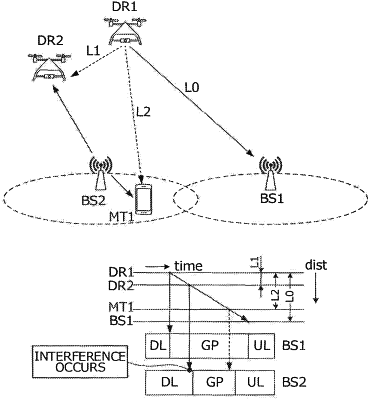| CPC G08G 5/0043 (2013.01) [G08G 5/0004 (2013.01); H04L 5/14 (2013.01); H04W 56/0055 (2013.01)] | 7 Claims |

|
1. An aerial vehicle operation management device comprising:
a processor configured to:
identify a first airspace of a plurality of airspaces in which a propagation delay equal to or greater than a first threshold value occurs in an uplink of a time-division duplex between a first wireless communication terminal and a first wireless base station to which the first wireless communication terminal is wirelessly connected;
identify a second airspace of the plurality of airspaces that satisfies a first condition that a second wireless communication terminal performs a time-division duplex with a second wireless base station by use of a guard period that is shorter than a guard period used between the first wireless communication terminal and the first wireless base station;
assign an aerial vehicle to at least one of the identified airspaces according to a flight plan, wherein a restriction is imposed on assignment of the aerial vehicle, on which the first wireless communication terminal is mounted, to at least one of the identified airspaces; and
control the flight of the aerial vehicle through the at least one assigned airspace.
|